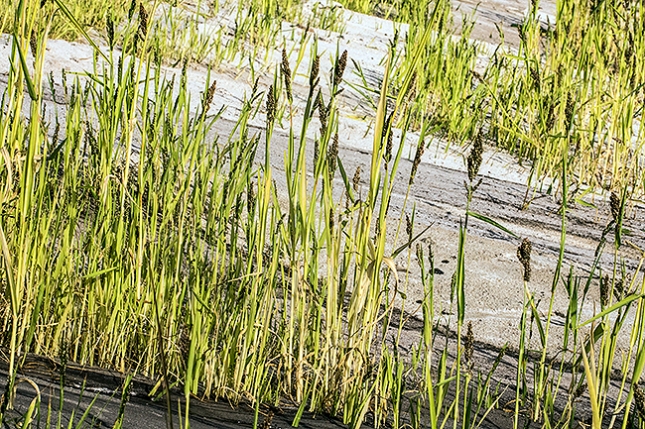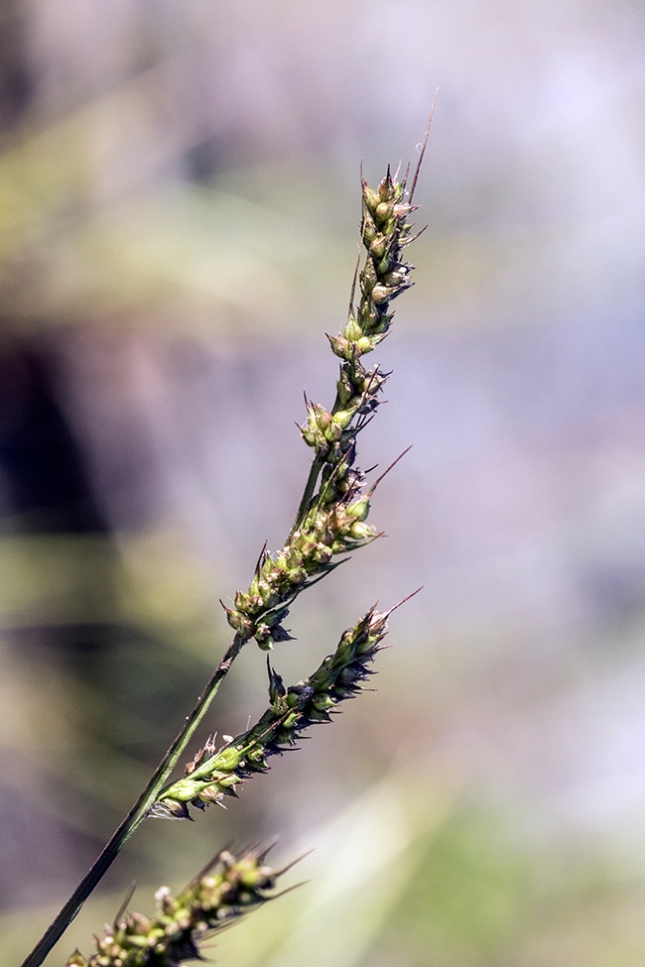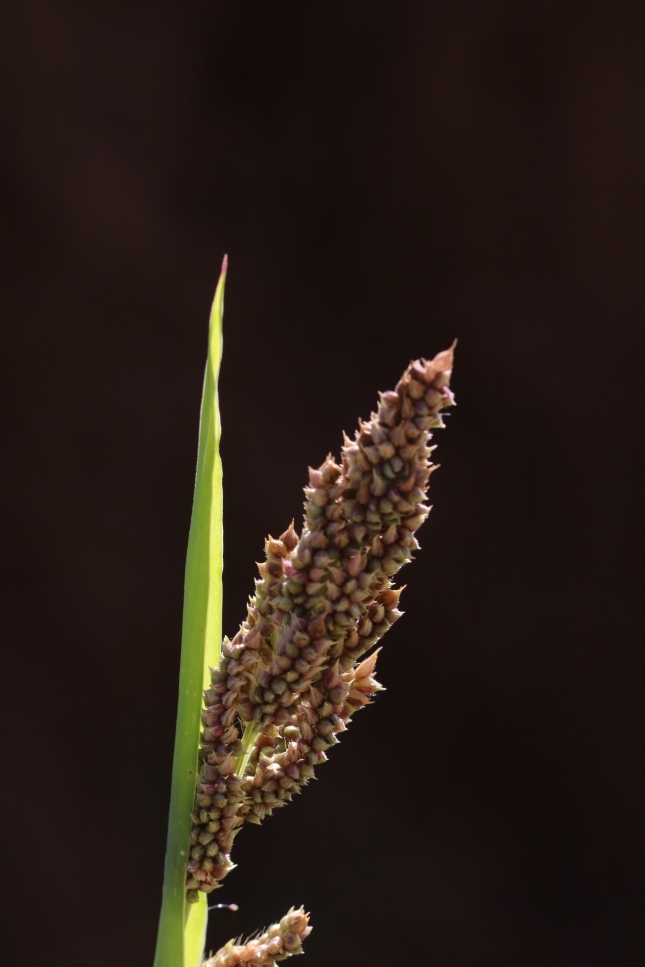Echinochloa esculenta
Poaceae
This week I’ve been roaming Ohio, Michigan, and Virginia tending my northern family roots and to botanical roots of higher latitudes. Up north botany is a joy, but unfit in Treasure Coast Natives, so instead here’s something local. No fieldtrip required.

Japanese Millet in Jupiter, a golden carpet seeded to fight erosion.
On the west side of the Florida Turnpike just north of Indiantown Road rises a vast new subdivision. The blossoming mini-mansions echo the pre-2008 gilded era.
As fondly as housing starts signify economic vitality, what a pity to convert greenspace to subdivisions named for the birds they displace.. Still, look beyond the promotional signs and construction dumpsters…there is always something of botanical interest. even in suburbia on steroids. On the gigantic berms there’s a cultivated grass seeded to hold the bare soil. That useful species is Japanese Millet, sold in the U.S. for binding soil and feeding fowl.

Short stature, thick dark heads. Look at that—on sand.
Japanese Millet once fed people. Its ancestors count among the oldest plants associated with humans. Paleontological remains of in China link Echinochloa to people back some 23, 000 years.
Shut Up! Did you say 23 thousand years? That is older than clay pottery (about 18,000 years), and there were no wheels back then for wheelbarrows. Stonhenge was just yesterday by Echinochloa standards. Cultivated Echinochloa is about twice as ancient as wheat. An ancient grain in a 2016 residential development is food for thought, as well as food for pretty birds but hopefully not for nasty ol’ rats, because rats are inconsistent with the Bed, Bath and Beyond gated golf active adult package lifestyle.
If Asian Echinochloas are so old in general, what about Japanese Millet itself? The name Echinochloa esculenta implies a crop species, origins at the hand of humanity. Another ancient Asian crop is rice, a comparative Johnny-Come-Lately in human affairs. Somewhere along the line rice and Echinochloas hooked up, perhaps the latter becoming a weed in rice paddies, and/or as a “plan B” when rice crops failed.
A pesky pest might see Echinochloa esculenta and say, “you sure that’s not Barnyard Grass?” Barnyard Grass (Echinochloa crus-galli) is a common introduced weed round here. Answer to the pest: yes you are correct, just as a dog is a domesticated wolf.

Wild-growing Barnyard Grass
DNA shows Japanese Millet to be essentially a cultivar (human-derived horticultural variant) of wild Barnyard Grass. As might be expected in a strain selected for grain, it has small stature, and large thick grainy tops dark in color. At least one researcher has pegged the pair as synonyms, that is, two names for one species. Archaeological specimens of Barnyard Grass with oversized (domesticated) grains, apparently the missing link between the wild species and Japanese Millet, date back to about the era of King Tut.

Japanese Millet, the seed head is thicker, fuller, more compact, darker, and with no or few awns (stiff threads)
So in a single Jupiter, Florida, development project you can stroll and see within a stone’s throw of each other wild Barnyard Grass, spontaneous in a drainage ditch, reunited with its long lost farm cousin right here and now, 7000 miles and 4000 years from their point of separation.
(Some may ask—“can they still interbreed”?)
Gregory Overcashier
July 24, 2016 at 10:46 pm
Thank you again George. Wonderful read.
George Rogers
July 26, 2016 at 2:24 pm
Gregory—bet that gorgeous Tom Turkey you posted might enjoy a little Japanese Millet.
theshrubqueen
July 25, 2016 at 8:15 am
Yes, a wonderful read and now I know I have Barnyard Grass beside my garage, Thanks, George.
George Rogers
July 26, 2016 at 2:25 pm
Amelia, thanks…was up at the St. Lucie River today…looks like the bluegreen algae…at least where I was…has diminished…I hope..
theshrubqueen
July 26, 2016 at 5:37 pm
Yes, i hope as well and hope the state would get serious about water quality.